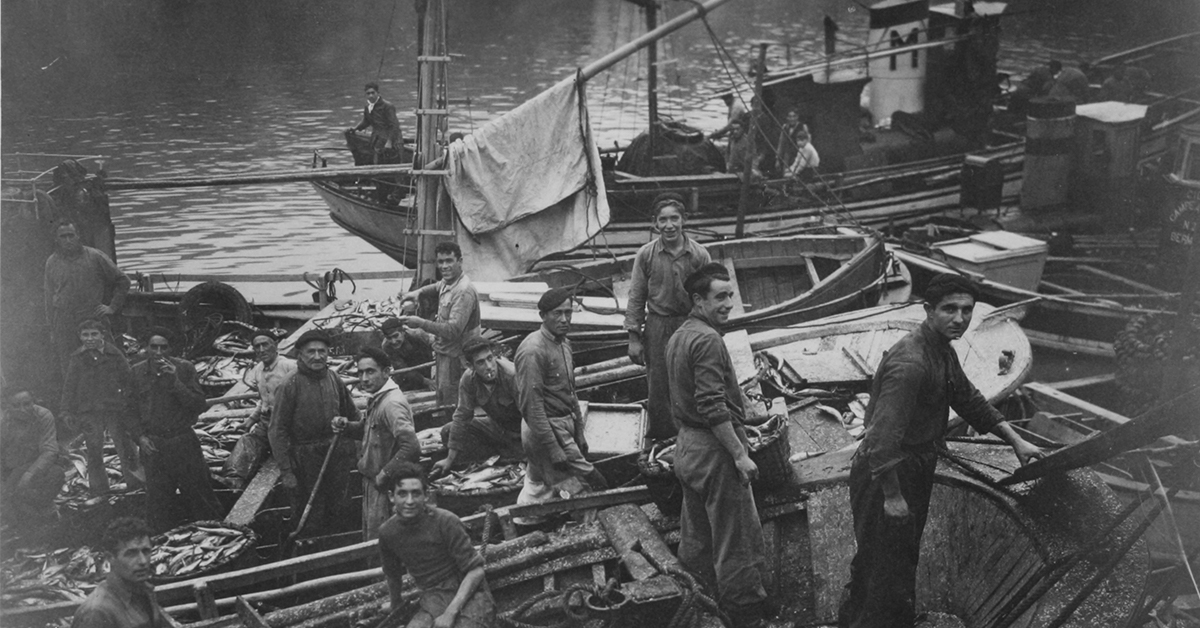Basque ethnography at a glance
The Feast Day of St. Simon and St. Jude, on 28 October, seemed to have been the watershed between summer and winter for our forebears. Indeed, the saying goes “St. Simon and St. Jude, summer has ended and winter is here”.
Later and based on that idea, Gabriel Aresti wrote a poem, that Xabier Lete popularised and which would make him famous.
The song begins thus:
«San Simon eta San Juda
joan zen uda, eta negua heldu da: (bis)
ez baletor hobe, bizi gara pobre (…)».
[St. Simon and St. Jude
/ Summer has gone and winter arrived: (bis)
/ it would be better if it did not come; as it is a time of hardship (…).]
But why does the song associate winter with being poor?
One reason based on the way of life of fishermen in the past is explained below.
The proverbs gathered by Azkue include the following: Por San Simón y San Judas, las embarcaciones fondeadas [Boats moored by the Feast of St. Simon and St. Jude]. In other words, boats should have dropped anchor and remain moored at the dock at that time of year. In fact, the season was very poor in terms of fish. Therefore, the arrantzales (fishermen) would spend their time on shore work until the red bream season started.
For example, they would go to the countryside to collect the husks, in other words, the leaves around the cobs from the corn fields. The thickest part of the husk, the upper part, was left in bleach for around a quarter of an hour to turn it white. Once whiten, they were left in the shade so they did not turn red. Those husks were used the following year as lures in the tuna season.
They also got ready to catch red bream. First, the young anchovies caught in October were salted and put in vats to be used as bait. The fishermen then prepared the longlines.
However, even though the red bream season began on St. Catherine’s Day, 25 November, it does not seem they caught many that early. That can be seen from these two sayings: Por Santa Catalina, los barcos a por besugos [The boats set off for red bream on St. Catherine’s Day]; and Cuándo es Santa Catalina? Es pronto para besugos [When is St. Catherine’s Day? It is early for red bream] Other saying is: El día de la Inmaculada, el primer besugo. [The first red bream on the Feast of the Immaculate Conception].
There were red bream aplenty once winter arrived. As the saying goes: Por San Txilibristo, el besugo cuelga de la boca [On the Feast of Saint Sylvester, red bream in abundance]; in other words, the red bream had to be on show on New Year’s Eve. And then there is a similar reference to the Feast of St. Anthony the Great: San Antón, besugos al montón [Feast of St. Anthony the Great, piles of red bream]. Stocks of that fish began to dwindle from then on.
In any event, the fishermen earned very little from those coastal catches.
Andoni Basterretxea summarised it perfectly in these verses:
«Sortzez Garbi egunez besigu leena,
San Antonetan gero sarritan azkena,
Eder jatekoik bada jaki goxoena
Besigua erreta Gabon gabaz onena.
Santa Katalina ta San Anton bitartez
Bizitza gogorra ta irabazi batez.
Bixigu goxo dala esan oi da errez,
Baiña obe lurrean itsasora ordez (…)».
[The first red bream on the Feast of the Immaculate Conception, /
And the last often on St. Anthony’s Day
/ if there is a delicious dish /
it is roasted red bream at Christmas.
/ Between St. Catherine’s and St. Anthony’s Days
A hard life and no profit.
/ It is easy to say that red bream is delicious,
/ but better on shore than going to sea (… ). ]
However, the fishermen knew the steps to be taken to keep poverty at bay. The fishermen’s guilds organised mutual aid or mutuality. The guilds thus gave advances to the fishermen when they could not go to sea in bad weather or when fish was scarce.
F. Javier Arrieta Idiakez
Professor of Social Security and Labour Law at Deusto University


